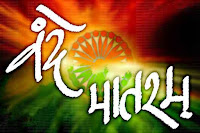We all hear this in many
places, in different forums, websites - that Sanskrit is the best suited
language for computers; that there are many studies and research in this
regard, and even NASA has endorsed it; NASA to echo Sanskrit in space (really?).
There was even a petition on change.org regarding
this. How much of this true? What are the basis of these statements? Let us
explore a little bit.
First, there is no evidence of NASA's endorsement or its study of
Sanskrit. Second, there is no need of NASA or anybody's approval
to prove the greatness of Sanskrit language. So, why is that the
Sanskrit-computer relationship meme so widespread?
Apparently, this relationship
has stemmed out of the notion that Sanskrit is a scientific, logical or mathematical
language. And computers too are based on logic and mathematics, with some aura
of mystery or smartness around them. Let us look at different aspects in play
here.
Computer Programming
Languages
When we say "language for
computers", it is not clear whether it is a language used to program a
computer (that is to build a logic to tell a computer what to do), or is it a
language that a computer can speak? Some of the computer programming languages
are C, C++, PHP etc. Programming of computer logic needs very precise
keywords, syntax and semantics. Sanskrit is a contextual language, and not
suited for this purpose. This is because computers are dumb machines without
contextual understanding. In Sanskrit, the usage and meaning of a word or
sentence depends on the context and needs proper interpretation.
Precision in Sanskrit
The closest association of
Sanskrit with NASA appears to be in the form of a paper presented in 1985 by
Rick Briggs (of NASA) in the AI Magazine (not affiliated to NASA), titled Knowledge Representation in Sanskrit and
Artificial Intelligence. In this paper, the author puts forth the challenges of
artificial intelligence (like robots) in understanding the natural (human)
language. The paper explains the shortcomings of English language in adequately
establishing the relationship between verb, subject, object and other words in a
sentence. Then it mainly dwells upon the simplicity of usage of words in
Sanskrit sentences using vibhakti endings (विभक्ति-प्रत्यय)
and karakas (कारक). The author posits that this approach could
make the human language understandable to the machines. This might work if
machines can figure out the context of a sentence.
What matters
Historical and cultural
inferences strongly indicate that Sanskrit was once a very widely spoken
language in a large geographical area. Panini (around 600 BC - 400 BC) did a
great job of compiling various usages in Sanskrit language and devising a set
of rules to derive the different forms of nouns and verbs. Though there are
some texts by other grammarians suggesting some additions to Panini's work, the
original work is almost complete in covering the grammar of Sanskrit. Panini's
algorithms established a baseline that is almost strictly adhered over
centuries, till today. Based on Panini's work, many computational engines have
been written that can spit out different forms of a Sanskrit word on a computer
screen. The real wonder here is Panini and his work. Computer is just a tool to
translate his algorithms. Artificial intelligence with Sanskrit is totally a
different subject, although Panini's work may play a part in that, if the
concept ever moves forward.
However, isn't it just
wonderful that while Sanskrit can be made to fit within a rigorous grammatical
framework, it can also linguistically scale up to the infinite quest of humans
in exploring and understanding the universe and self?



























